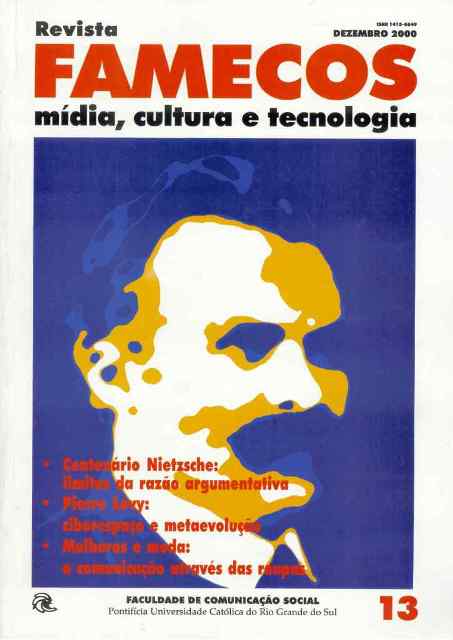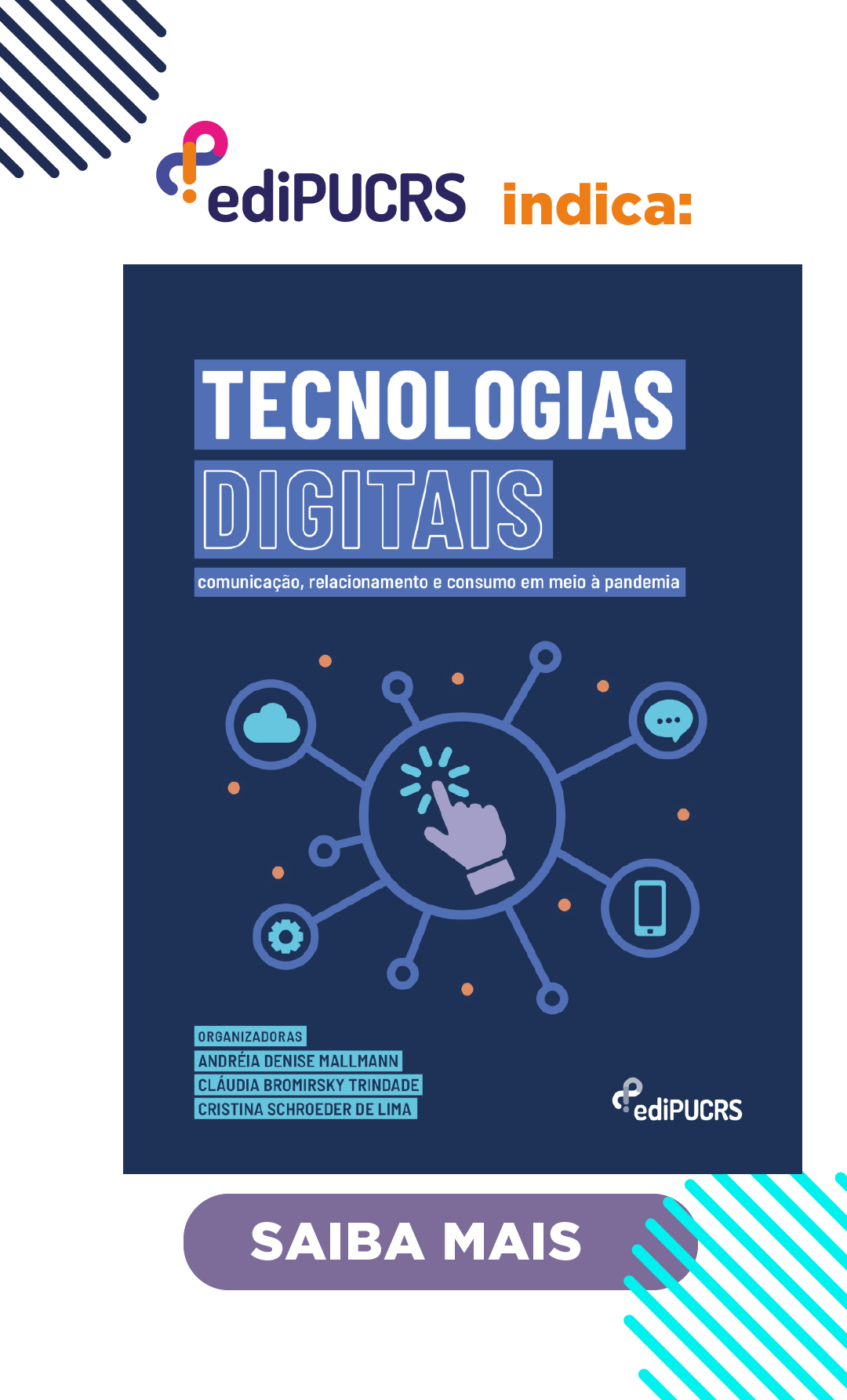Hypertexts, computer games and communication
DOI:
https://doi.org/10.15448/1980-3729.2000.13.3083Keywords:
Communication, Hypertext, CybercultureAbstract
This article deals with the transformation of the computer into a medium of communication. To say that the computer is a means of communication seems something obvious in the age of the internet. But what is the medium of communication? For some it is a multimedia, capable of integrating the formats and languages of all other media. For others it is something more than this: in integrating the language of other means, the computer imposes to them their own logic. But ... what logic?Downloads
References
AARSETH, Espen J. “No linealidad y teoría literaria”. In
LANDOW, Georges. Teoría del Hipertexto. Barcelona: Paidós, 1997, pp. 71-106.
AARSETH, Espen J. Cybertext: Perspectives on Ergodic Literature. The Johns Hopkins University Press, 1997.
BARTHES, R. O prazer do texto. São Paulo: Perspectiva, 1973.
BAL, Mieke. Introduction to the Theory of Narrative. Toronto: University of Toronto Press, 1985.
BARTHES, Roland. “Introdução à análise estrutural da narrativa”. In BARTHES, Roland et alii, Análise estrutural da narrativa. Petrópolis: Vozes, 1976, 4a ed., pp. 19-60.
BARTHES, Roland. S/Z.Paris, Ed du Seuil, 1970.
BORDWELL, David. Narration in the Fiction Film. Madison: The University of Wisconsin Press, 1985.
BUSH, Vanevar. “As we may think”. In MAYER, Paul (org.) Computer Media and Communication: a Reader. Oxford (NY). Oxford University Press, 1999.
CHATMAN, Seymour. “What Novels Can Do That Films Can’t (and Vice Versa)”. In MITCHELL, W. J. T. (ed.). On Narrative. Chicago: The University of Chicago Press, 1981.
ESS, Charles. “El ordenador político. Hipertexto, democracia y Habermas”. In LANDOW, Georges. Teoría del Hipertexto. Barcelona: Paidós, 1997, pp. 259-303.
FISKE, John. “Television: Polysemy and Popularity”. InAVERY, Robert K. & EASON, David. Critical perspectives on media and society. New York, London: The Guilford Press, 1991, pp. 346-364.
GAUDREAULT, André & JOST, François. El relato cinematográfico. Barcelona: Paidós, 1995.
GENETTE, Gérard. “Fronteiras da narrativa”. In BARTHES, Roland et alii, Análise estrutural da narrativa. Petrópolis: Vozes, 1976, 4a. ed., pp. 255-274.
GENETTE, Gérard. Narrative Discourse: an Essay on Method. Ithaca (NY) Cornell, 1980.
HALL, Stuart. “Encoding/decoding” In HALL, Stuart & alii. Culture, media, language. London: Hutchinson/CCCS, 1980.
ISER, Wolfgang. O ato da leitura: uma teoria do efeito estético. São Paulo: Editora 34, 1996, 2 volumes.
JENSEN, Jens. “Interactivity: Tracking a New Concept in Media and Communication Studies”. In MAYER, Paul (org.) Computer Media and Communication: a Reader. Oxford (NY). Oxford University Press, 1999, pp. 160-187.
JOYCE, Michael. “Sustituyendo ao autor: Un libro en ruinas”. In NUNBERG, Geoffrey (comp.) El futuro del libro. Barcelona, Paidós, 1998. pp.279-302.
KOLB. David. “Socrates en el labirinto”. In LANDOW, Georges. Teoría del Hipertexto. Barcelona: Paidós, 1997, pp. 259-303.
LANDOW, George. Hypertext. The Convergence of Contemporary Critical Theory and Technology., The John Hopkins University Press., 1992.
LANDOW, George (comp.). Hypertext Theory. The John Hopkins University Press., 1994.
LÉVI-STRAUSS, Claude. “A Estrutura dos Mitos”. In Antropologia Estrutural. Rio de Janeiro: Tempo Brasileiro, 1985, 2a ed.
LÉVY, Pierre. As tecnologias da inteligência: o futuro do pensamento na era da informática. São Paulo: Ed 34, 1993.
LÉVY, Pierre. O que é o virtual? São Paulo: Ed 34, 1996.
LÉVY, Pierre. Cibercultura. São Paulo: Ed 34, 1999.
LIESTOL, Gunnar. “Wittgenstein, Gennette y la narrativa del lector en hipertexto”. In LANDOW, Georges. Teoría del Hipertexto. Barcelona: Paidós, 1997, pp. 107-145.
MILES, David. “The CD-ROM Novel Myst and McLuhan’s Fourth Law of Media: Myst and its “Retrievals”. In
MAYER, Paul (org.) Computer Media and Communication: a Reader. Oxford (NY). Oxford University Press, 1999, pp. 307-319.
MURRAY, Janet H. Hamlet on the Holodeck: the Future of the Narrative in Cyberspace. Cambridge (Mass.): The MIT Press, 1997.
NELSON, Theodore. Literary Machines, Swarthmore, Pa. Publ.do autor, 1981.
SÁ, Simone Pereira de, e ALBUQUERQUE, Afonso de. “A tragédia dos ursos e outras mensagens: observações sobre a e-política e a globalização”. Texto apresentado no IX Encontro Anual da COMPÓS. Porto Alegre, 2000.
STEINER, Linda. “Oppositional Decoding as an Act of Resistance”. In AVERY, Robert K. & EASON, David. Critical Perspectives on Media and Society. New York, London: The Guilford Press, 1991, pp. 329-348.
TODOROV, Tzetan. As estruturas narrativas. São Paulo: Perspectiva, 1970.
Downloads
Published
How to Cite
Issue
Section
License
Copyright
The submission of originals to Revista Famecos implies the transfer by the authors of the right for publication. Authors retain copyright and grant the journal right of first publication. If the authors wish to include the same data into another publication, they must cite Revista Famecos as the site of original publication.
Creative Commons License
Except where otherwise specified, material published in this journal is licensed under a Creative Commons Attribution 4.0 International license, which allows unrestricted use, distribution and reproduction in any medium, provided the original publication is correctly cited.






